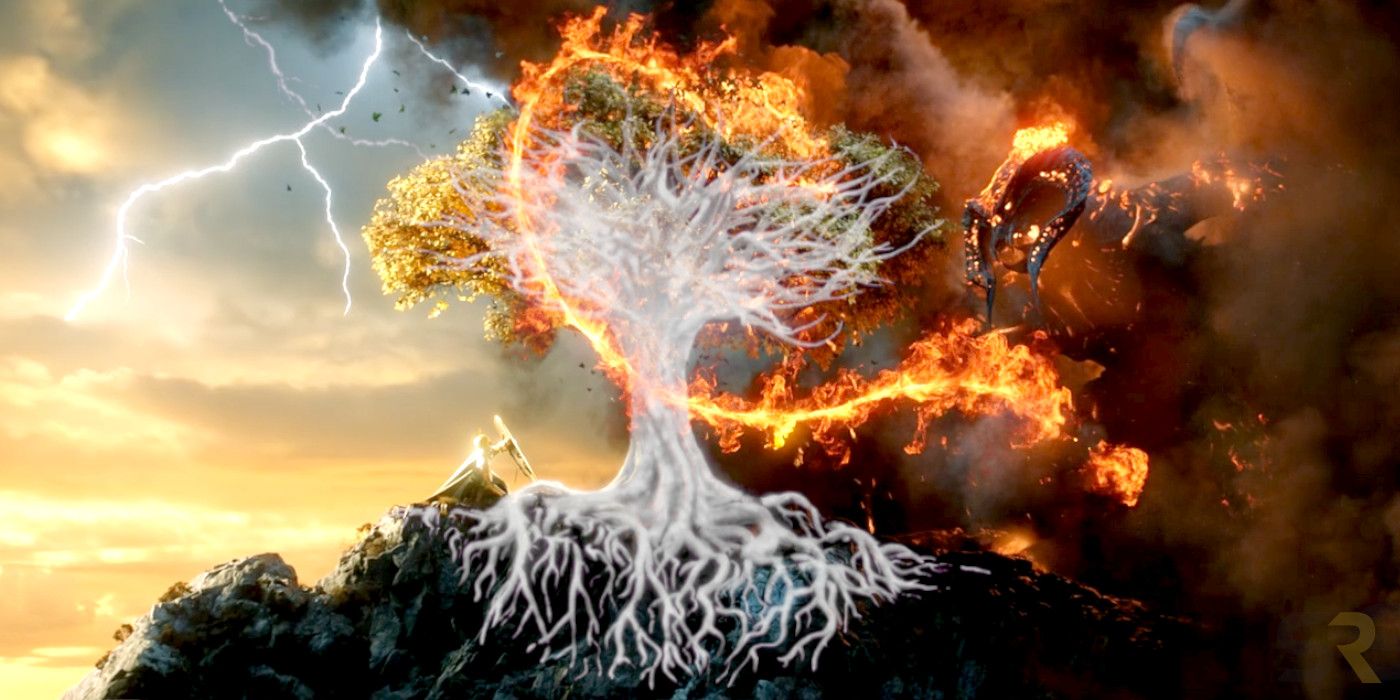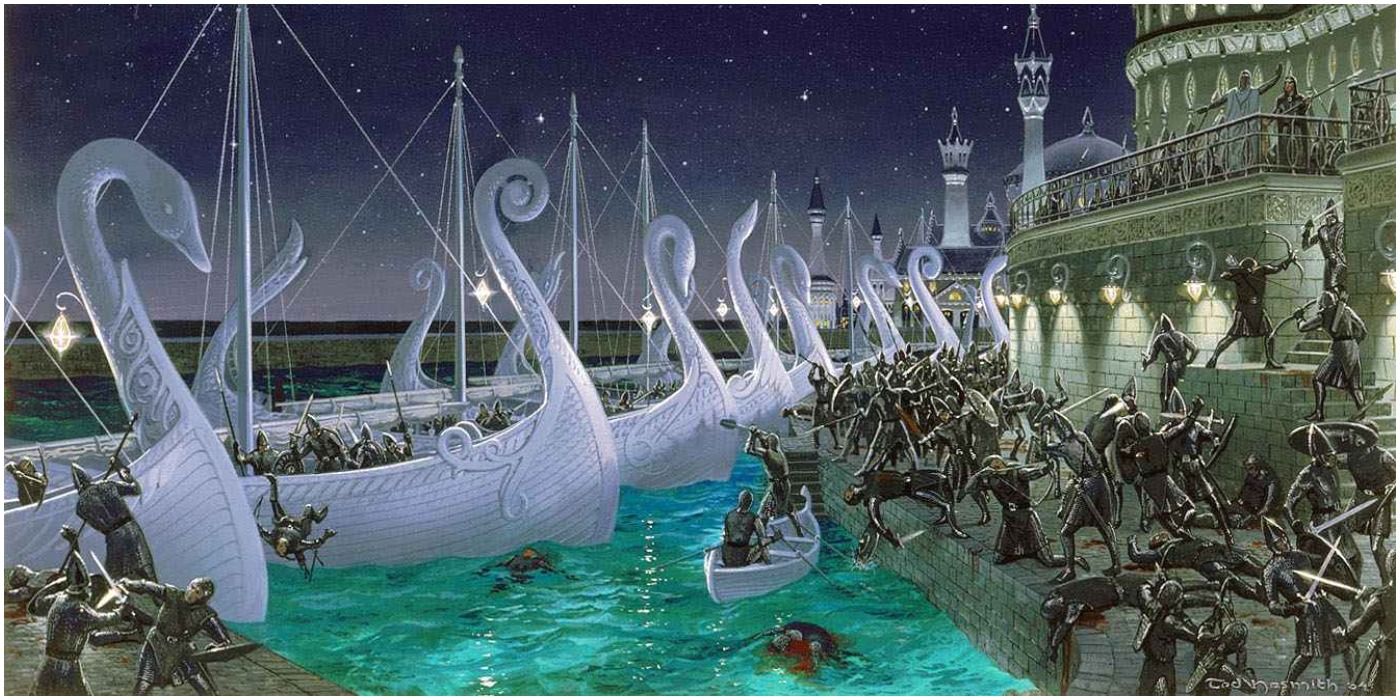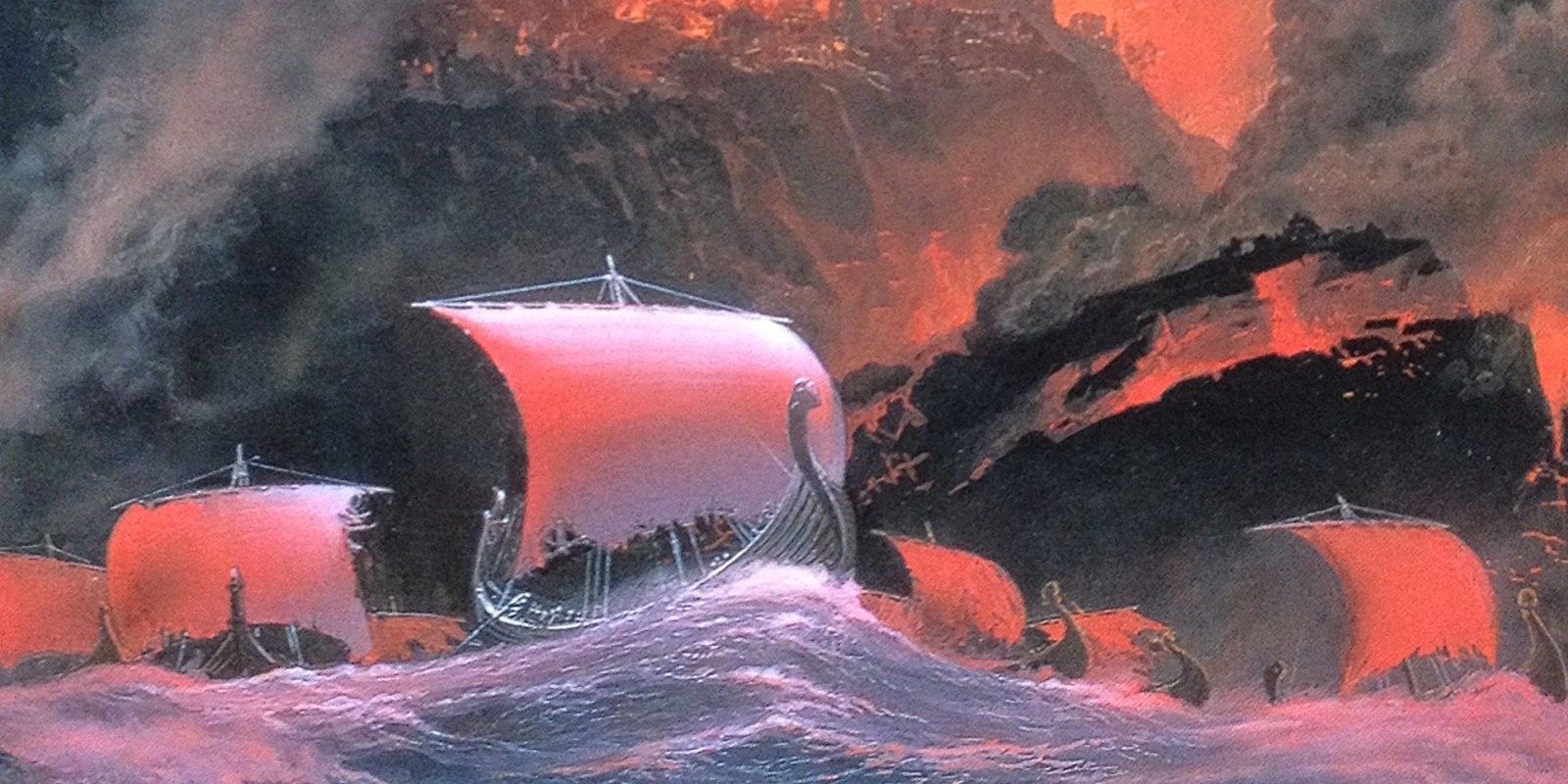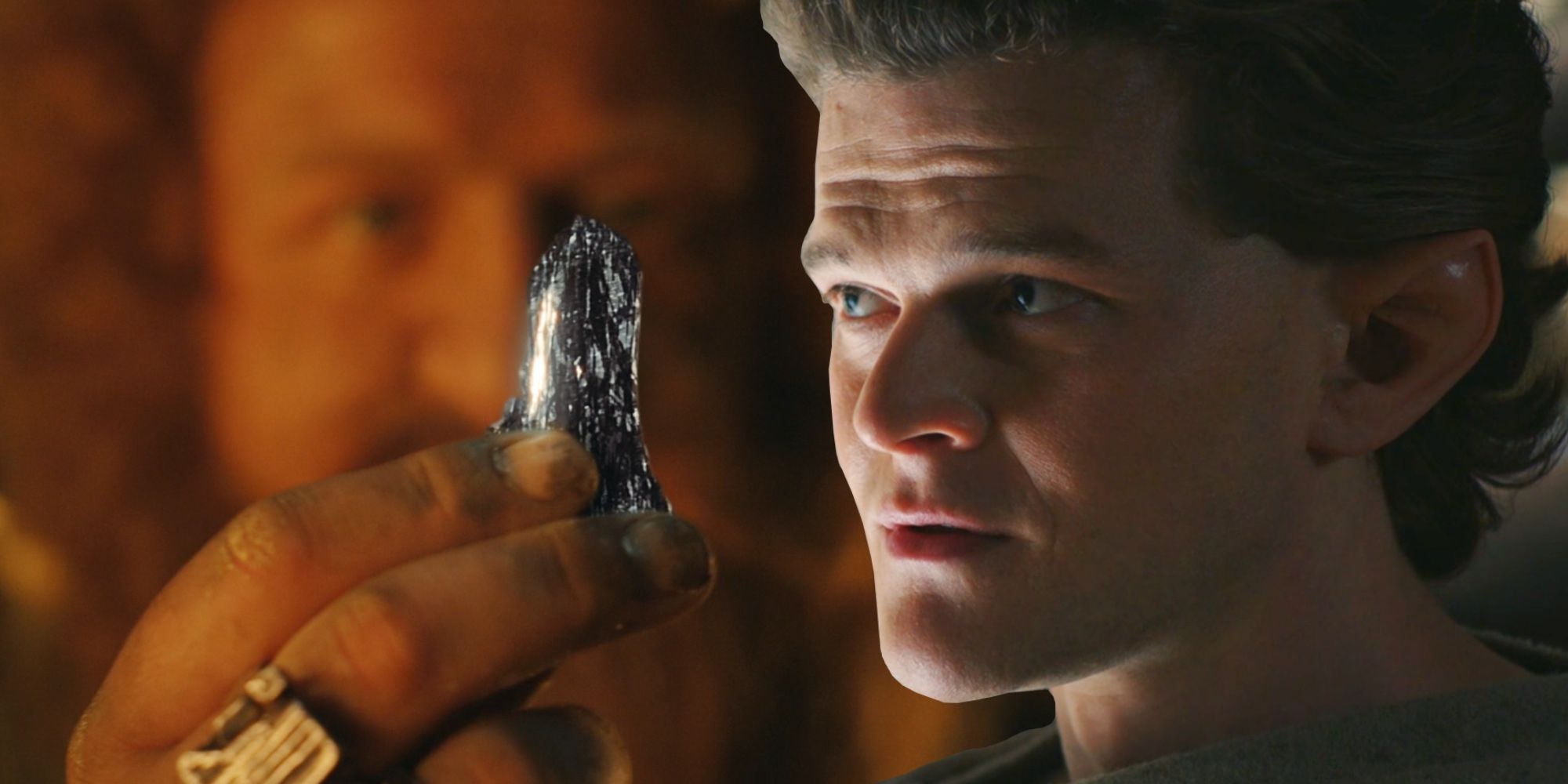The Rings of Power's recent retcon to J. R. R. Tolkien's Lord of the Rings lore reveals the show's biggest canon constraint. While the show has been mostly loyal to the version of events written by Tolkien, even in its small deviations, there are some LOTR stories The Rings of Power writers aren't actually allowed to include in the show.
The vast majority of audiences are primarily familiar with The Hobbit and The Lord of the Rings from Peter Jackson's movies and/or Tolkien's books, all of which happen at the very end of the Third Age of Middle Earth, but Tolkien chronicled tens of thousands of years of stories occurring prior to The Lord of the Rings. Some of these stories were referenced in The Hobbit or The Lord of the Rings trilogy, including the Appendices at the end of The Return of the King, but most of what's known about that additional canon comes from other works by Tolkien published after his death, such as The Silmarillion, which The Rings of Power isn't allowed to use for its own story.
There's still plenty of storytelling available to Amazon and The Rings of Power's showrunners, J.D. Payne and Patrick McKay, but there's certain stories they've had to ignore, awkwardly dance around, or change altogether in order to meet the various story constraints. These deviations or omissions might disappoint some fans of Tolkien's work, but in some ways, they are also proof of how loyal the show is to Tolkien's Legendarium.
Why Rings of Power Can't Use All of Tolkien's Lord of the Rings Canon
The complicated realm of movie and TV rights to various properties has seen a lot of focus in recent years due to situations like Marvel Studios, where the rights to a chunk of their characters were distributed to other studios such as Spider-Man at Sony and the X-Men at 20th Century Fox (prior to its acquisition by Disney). The situation is a little simpler when it comes to the works of J. R. R. Tolkien, although the way the rights to the material is handled is a little different.
Tolkien originally sold the rights to The Lord of the Rings and The Hobbit (his only published Middle Earth stories at the time) in 1968. Those rights have changed hands a number of times since, resulting in the 1977 animated Rankin/Bass The Hobbit movie, the Ralph Bakshi animated The Lord of the Rings movie, and Peter Jackson's The Hobbit trilogy and The Lord of the Rings trilogy. Since Tolkien's other writings like The Silmarillion and Unfinished Tales were compiled by his son, Christopher, and published posthumously, the rights to those stories (other than the brief references in The Hobbit and The Lord of the Rings) have always been maintained by the Tolkein estate. Patrick McKay said “There’s a version of everything we need for the Second Age in the books we have the rights to. As long as we’re painting within those lines and not egregiously contradicting something we don’t have the rights to, there’s a lot of leeway and room to dramatize and tell some of the best stories..." Although there's still some elements of The Rings of Power that are clearly dancing around events depicted in more detail in The Silmarillion.
Related: Why Elrond Will Break His Mithril Promise To Durin In The Rings Of Power
Rings of Power is Dancing Around One of Tolkein's Biggest LOTR Stories
The prologue in The Rings of Power's first episode tells the story of "The Darkening of Valinor," painting it as the impetus for the elves to leave their home after the light of the trees to go to war with Morgoth in Middle Earth, and while that's an accurate depiction of events, it masks the elves' true motivations. Fëanor, a mighty elf and highly skilled at crafting gems, with his highest achievement, the Silmarils, being three gems that captured the holy light of the two trees. When Morgoth destroyed the trees, he also stole the Silmarils, and the Elves that followed him to Middle Earth were primarily following Fëanor on a mad quest for revenge.
The events surrounding Fëanor's Silmarils are detailed in The Silmarillion in far greater detail, and a show focused on that portion of lore would be particularly enticing, partially because of its own epic mythology, but also because of how core it is to the rest of the LOTR story. Unfortunately, since the Amazon show doesn't have the rights to The Silmarilion, the Silmarils only receive vague allusions or brief mentions in The Rings of Power even though the Silmarils are the sole reason many of the elves are in Middle Earth in the first place.
The Rings of Power Mithril Retcon Fixes the Show's Silmaril Problems
In The Silmarilion, Fëanor's pursuit of the Silmarils led his Noldor elves to go to battle against other elves, the "Kinslaying," resulting in the "Doom of the Noldor" declared by Mandos, one of the Valar (angelic beings). The Doom of the Noldor banished Fëanor's people from Valinor and declared they would face great suffering in Middle Earth and their power would wane as long as they remained in Middle Earth.
To get around this major story development, it appears The Rings of Power found a creative solution. As Darkness spreads through Middle Earth, the show has revealed plants and animals are being infected, and now Gil-Galad, the king the Noldor, suggests the elves themselves are also dying, which easily represents a version of the Doom of Mandos. The show was able to briefly explain the light of the trees and the power it provided to the elves, but without Fëanor and the Silmarils, the Elves have no story reason to remain in Middle Earth in The Rings of Power (and many of them are returning to Valinor - although that also needs more explanation). In order to square this circle in the plot, a brand-new story is added to Tolkein's lore in Episode 5, "Partings," where Gil-Galad tells Elrond a tale in which an elf and Balrog's struggle over a Silmaril, sending its light down into the Misty Mountains where it created the strong and brilliant metal, mithril.
Elrond says the story is "apocryphal," so it's possible it's not even true, and even if it is, it doesn't inherently change any of the properties Tolkien gave to mithril, although the show will need to clarify more there - it's entirely possible Gil-Galad's theory that it'll restore the elves is false. Regardless, this minor change gave The Rings of Power both a substitute for the Doom of Mandos on the Noldor and gives them a MaCguffin in mithril to replace the Silmarils. It's disappointing that the show has to find ways to write around the actual story of the Silmarils, but this explanation effectively closes a loop and allows the show to avoid that portion of The Silmarilion entirely while also labelling the story as "apocryphal," meaning the "real" version of the story could line up more accurately with Tolkien's original canon.
There are always changes made to source material to transpose it from one medium to another, so changes to Lord of the Rings canon are a reality of The Rings of Power's adaptation, especially since they don't have the rights to all of Tolkien's stories; however, the way the show has navigated around the Silmarils, and now literally transferred their light into mithril, is a clever storytelling maneuver that actually allows the show to hew clower to the story and spirit of The Silmarillion. The fact that the show takes place in the Second Age will always be a story constraint without the rights to Tolkien's full Legendarium, but navigating around the story of the Silmarils frees The Rings of Power from one of the show's biggest canon restraints.




